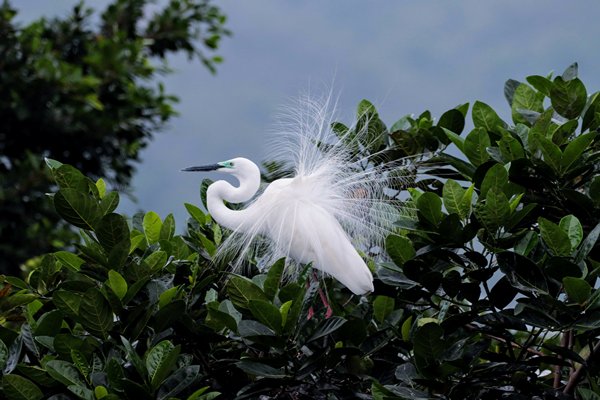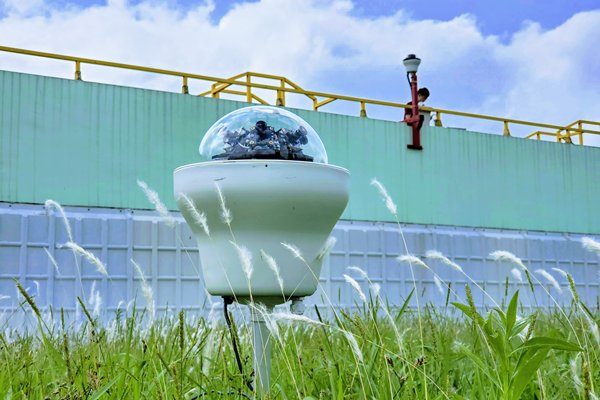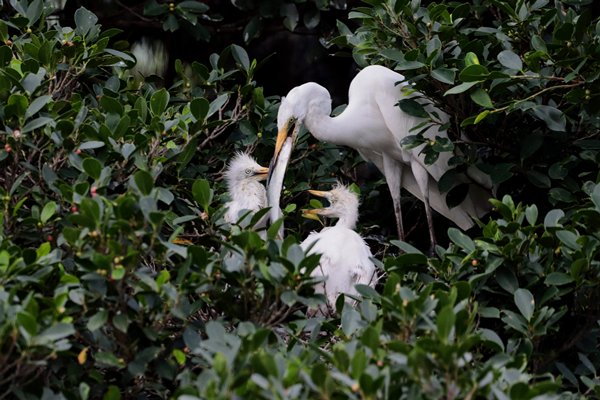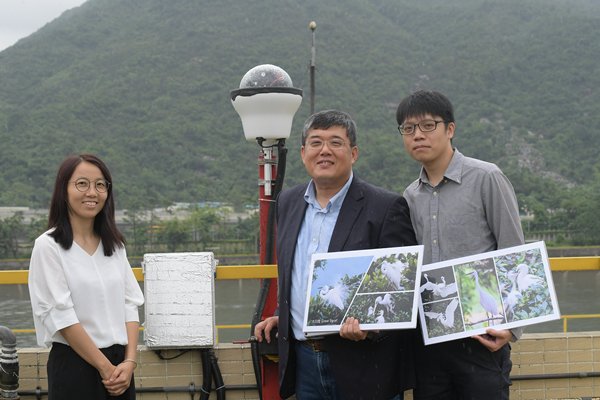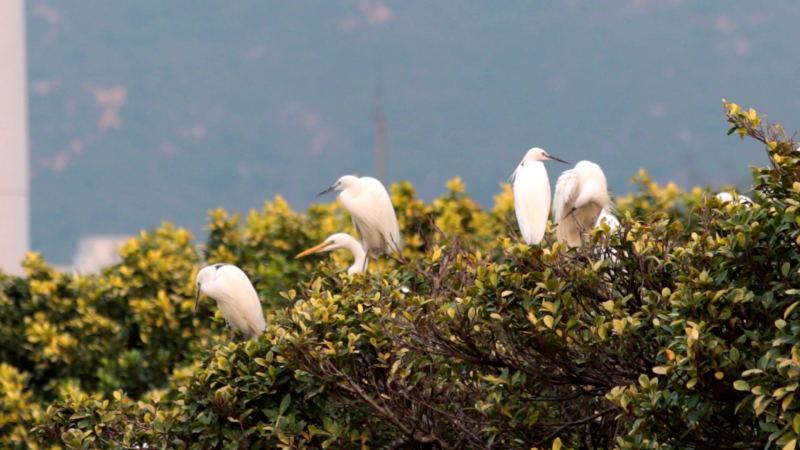Green AI protects HK wildlife
The period between March and August is the breeding season for egrets. During those months, residents can easily spot these long-legged birds around Shing Mun River and Tolo Harbour.
The Drainage Services Department is planning to relocate the Sha Tin Sewage Treatment Works, an environmental assessment conducted by the department found the birds mainly live in Penfold Park, which is near the facility.
Green innovation
To reduce disturbance to the egretery during the relocation, the department began collaborating with the Hong Kong University of Science & Technology to use state-of-the-art green artificial intelligence technology to learn more about the birds last June.
The university’s Department of Civil & Environmental Engineering Associate Head Prof Wang Yu-Hsing and his team were behind the design and manufacturing of a high-tech camera system.
His team installed 4K 360-degree cameras at the treatment works and nearby Penfold Park.
The AI system can distinguish different types of egrets with more than 90% accuracy as well as count the number of birds.
Prof Wang said they taught the AI system to recognise the different types of egrets in different environments.
“When they see the birds with the blue sky, they know this is a little egret or a great egret. Once they are hiding behind the leaves, we also tell them this is a little egret or great egret.”
He noted the system is a vast improvement from when experts used binoculars to watch the birds during specific periods of the day.
“Now, we can put the camera up. It can be used 24 hours a day, seven days a week.”
Prof Wang added the system can monitor the birds in inclement weather and that the data will be beneficial for experts.
Safe habitat
Drainage Services Department Engineer Carol Yip said the data from the collaboration can be used to protect the birds when the relocation takes place.
“The treatment works is located on the egrets’ flight path. We want to know more about them, for example, when they fly to find food, or what time they go back to their nests.
“This way, we can make better plans for when the relocation starts. Works that are less noisy can be arranged for times when they are resting nearby.”
The department will analyse data gathered from the Green Artificial Intelligence Pilot Study, which has been running for a year, with bird experts.
Big data and AI technologies will also be used to analyse sounds and vibrations in the area to further protect the environment.
